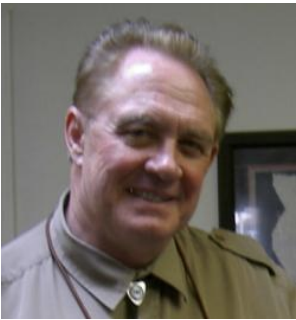ABIP Part 5 – 1947 Pages for only $138

[May 2019] Every station should have confidence that they are operating in a way that satisfies the FCC Rules and Regulations. Doing so prevents getting a Notice of Violation from the FCC with the potential of fines, costs to fix the problem, and legal fees.
A major part of passing an ABIP inspection – or your own checkup using the FCC’s Self-Inspection Checklist – is understanding the FCC Rules regarding your station’s Authorization. .
Of course, you can always pick up the phone and call your communications attorney. The problem is, dealing with a simple matter can suddenly run into hundreds (or thousands) of dollars.
All You Need for Assured Compliance
While conducting thousands of Alternative Broadcast Inspections and issuing the Compliance Certificates for stations passing the inspections, I have relied on four books to deal with any questions or uncertainties. Along with the NAB’s “Legal Guide to Broadcast Law and Regulation” and the “SBE’s “Broadcast Engineering Handbook, ” I rely on two volumes of the Federal Regulations for Telecommunication, Parts 0-19 and Parts 70-79 (Most recently revised as of October 1, 2018.) These key publications have always been invaluable in clarifying questions about station operation.
They also come in handy for writing my columns. For example, frequently a reader will email me and ask: “Why do not you cover this (subject) in a column?” Give me five minutes to check the index and ten minutes to scan the subject and I am enjoying my typical two hours of writing my next week’s column.
For me, digging for answers is fun and it keeps the old think tank well lubricated.
1947 Pages for Only $138
All together the four books can be had for a net cost of less than $500, postpaid! That is less than my lawyer “friend” charges me for an hour of consultation.
Want just the basics? The two volumes of Federal Telecommunication Regulations, Parts 0-19 and Parts 70-79, can be ordered for only 2 $138. Those 1946 pages are full of answers you need .
Of course, there will be times when a Communications Attorney will be needed to deal with what many perceive as substantial, massive, unnecessary, and incomprehensible verbiage requiring “professional legal assistance,” One example is the over 200 little known pages which are briefly condensed into four pages “defining” Equal Employment Opportunity as covered in Section73.2080.
Nevertheless, using these books, will often reduce the need for outside help – and be much less expensive for you.
And the Answer Is
Ok, let us go to work on yesterday’s email asking, “What are the most frequent items of non-compliance you find during a typical Alternative Inspection?”
That is really simple; Public Information Files! Section 73.3526 of the Rules for commercial stations and Section 73.3527 for non-commercial stations – all covered in only twelve pages, 317-329. Recent letters from the FCC indicate a substantial number of stations have failed to properly post required items.
To get a good grip on those thousands of pages referenced above I urge licensees to obtain a copy of the appropriate FCC “Self Inspection Check List” for their type of station(s) (i.e. AM, FM, LPFM, TV or Translator). For each item addressed, you will find the exact rule from the Federal Regulations listed for your further review in the books referenced above.
Watching the NALS
One of the most popular items in the very excellent BDR (the Broadcaster’s Desktop Reference) is the constant updating of the FCC’s Notice of Apparent Liability (NAL) fine lists of those getting fined for what and for how much.
On more than one occasion, I have found a station that I had inspected and certified compliant in that fine list. (I keep full records for all stations I inspect for at least three years.)
Yet, after my investigation, a closer look, showed the fine was the result of a former disgruntled employee or a listener unhappy with a station’s adverse coverage of their misconduct (or that of a relative).
It does not take much research to realize many items provide little in the way of the FCC’s long-time code of conduct to “Serve the Public’s Interest, Convenience and Necessity” while providing more substantially to serving special interests with hidden agendas. In this regard, I offer the example of the degree to which politicians have forced “lowest unit rate” for their ads and political propaganda while prohibiting stations from editing any of their paid content.
Using the Reference Tools
Seriously, thumbing through those books can really get addictive while being very helpful and in many cases saving very substantial legal costs, time, and frustration.
– – –
Ken Benner, CBRE, has served as an inspector in the FCC’s Alternate Broadcast Inspection for the past 24 years, as well as the official pancake turned at breakfast meetings You can contact Ken at: bennerassociates@me.com
